OXO Brew Compact review: petite perfection, sip after sip
If you're short on space, but still want a killer cold brew, you're in the perfect place
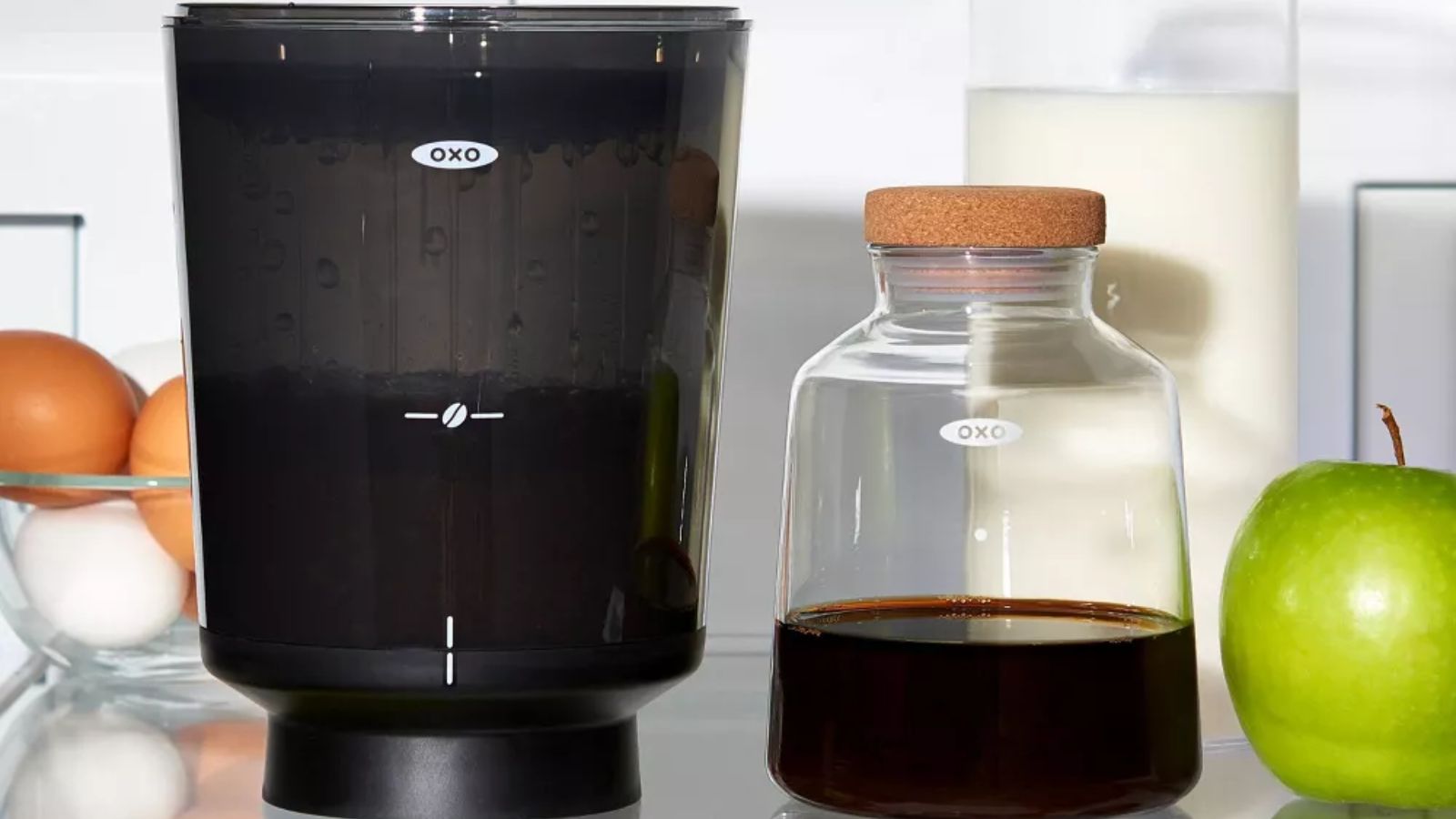
The OXO Brew Compact is perfect for small kitchens. It's like a mini version of the OXO Good Grips and it will make cold brew that's just as good. Even though it's smaller, the price doesn't drop relative to size, so it's relatively expensive.
-
+
Looks beautiful
-
+
Makes good cold brew
-
+
Container is easy to store
-
+
Feels premium
-
+
Makes good cold brew
-
-
Expensive
-
-
Quite wide
-
-
Sensitive spring valves
You can trust Homes & Gardens.

Finding small cold brew coffee makers that don't compromise on features and flavor used to be tricky. Since the OXO Brew Compact slid onto the cold brew scene, it's been my go-to for small kitchens, people who need portable options, and single-serves.
Over the last year, I've been using the best cold brew coffee makers in my home. Whilst OXO's bigger, Good Grips cold brew coffee maker is still my favorite option of all time, the OXO Brew Compact comes a close second. This miniature marvel offers all the premium features of the larger model, just without any space-consuming drawbacks.
So, if you're thinking about learning how to make cold brew at home, but you don't want to devote a lot of time, space, and money to your cold brew coffee maker, this is an excellent option.
Specifications
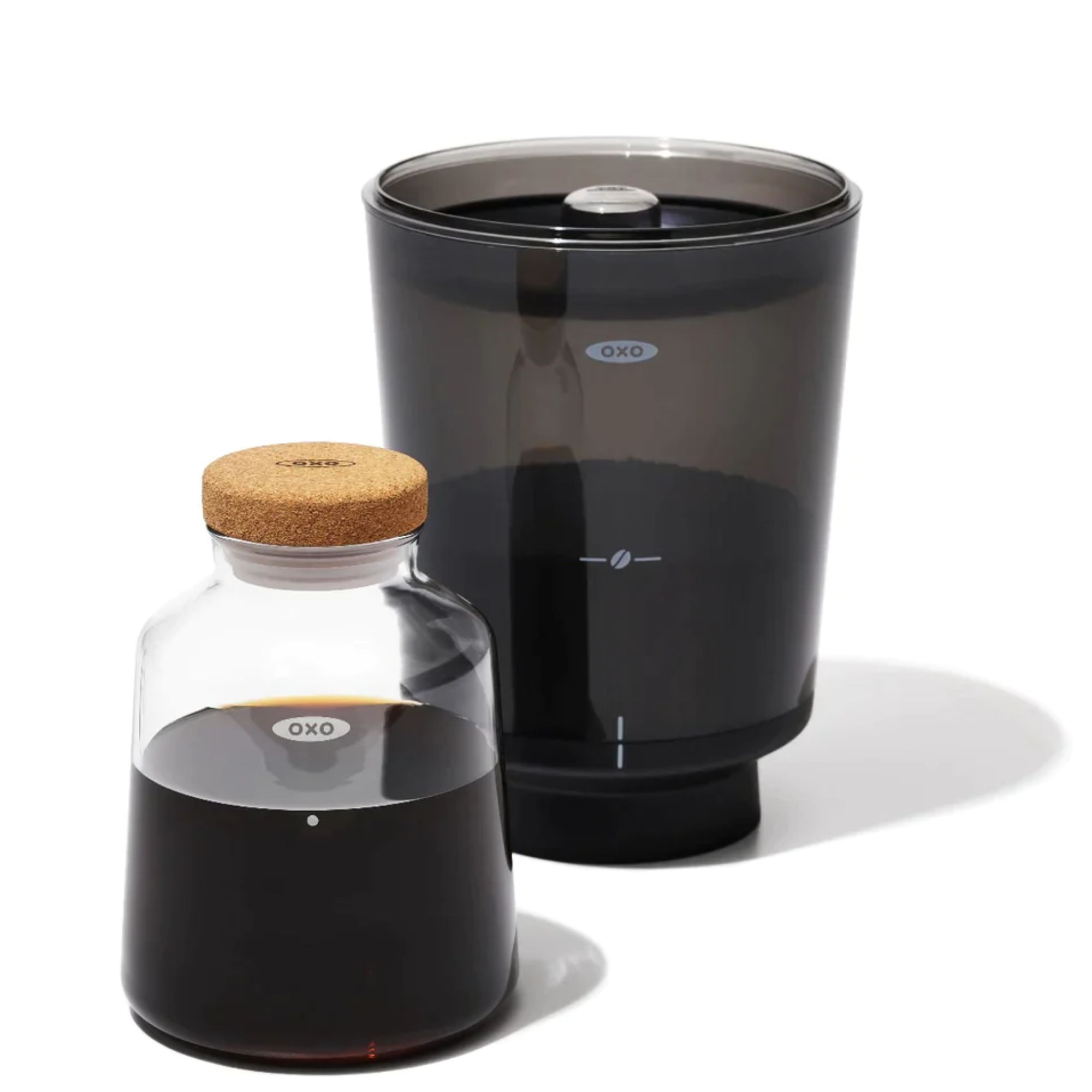
| Dimensions | 7 x 5.1 x 4.3 inches |
| Materials | BPA free plastic and glass |
| Filter type | stainless steel |
| Weight | 0.4 lbs |
| Capacity | 12 fl oz |
| Brew time | 12-24 hours |
Unboxing
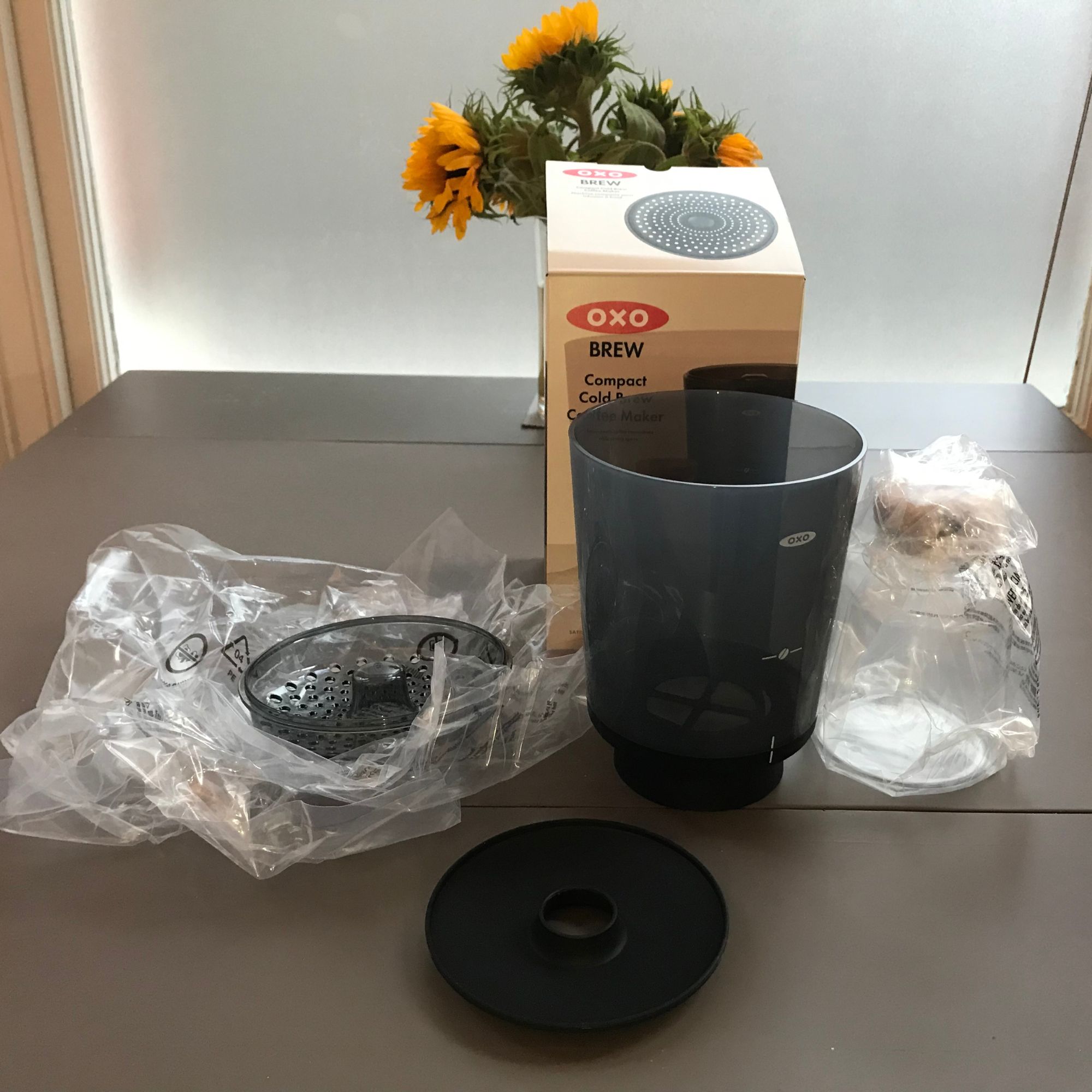
Smaller products will go one of two ways. They're either straightforward and simple, or fiddly and annoying. Thankfully, OXO falls into the former category. It's made up of only six parts: a glass decanter with a cork stopper; a brew vessel; a stainless steel filter; a trademarked rainmaker; and a lid. Each part comes wrapped in plastic film, which isn't great for the environment, but there are increasing numbers of places where you can recycle these.
OXO has mastered the balance of size and stature. This design feels and looks premium, but it's also petite. I gave it a quick test in my refrigerator and it fits on every shelf, but not in the door, because it's quite wide. That gives me plenty more options than other models, which required me to re-arrange my refrigerator shelves.
In the last year that I've had it in my kitchen the Brew Compact has been easy to store. Even with the stand and any other paraphernalia, it's more convenient to keep in my cupboards than any other appliance. It's like fitting a few bags of coffee onto a shelf – so simple.
Who would it suit?

Most obviously, the Brew Compact is well-suited to small kitchens. If you start every day with a cold brew, seven days a week, the OXO is the perfect size for you. I made a full batch on Sunday night and it lasted me through to next Sunday morning.
The beauty of the OXO is that it's not too expensive either. So, if you're new to cold brew and reluctant to splash the cash, this is a simple, option that doesn't feel like a cheap cop-out. For example, even though this is the cheaper model, it still comes with OXO's trademarked rainmaker lid that evenly disperses water over your coffee grounds. Even a novice would struggle to make a bad cold brew.
My only reservation is for those who live in large households. As a smaller model, the capacity is naturally smaller and more limited than other cold brew coffee makers, such as the OXO's Good Grips Coffee Maker. One batch lasted me for a week, but if I had friends staying or a partner who liked coffee as much as me, I know we would speed through it in a matter of days.
What is it like to use?
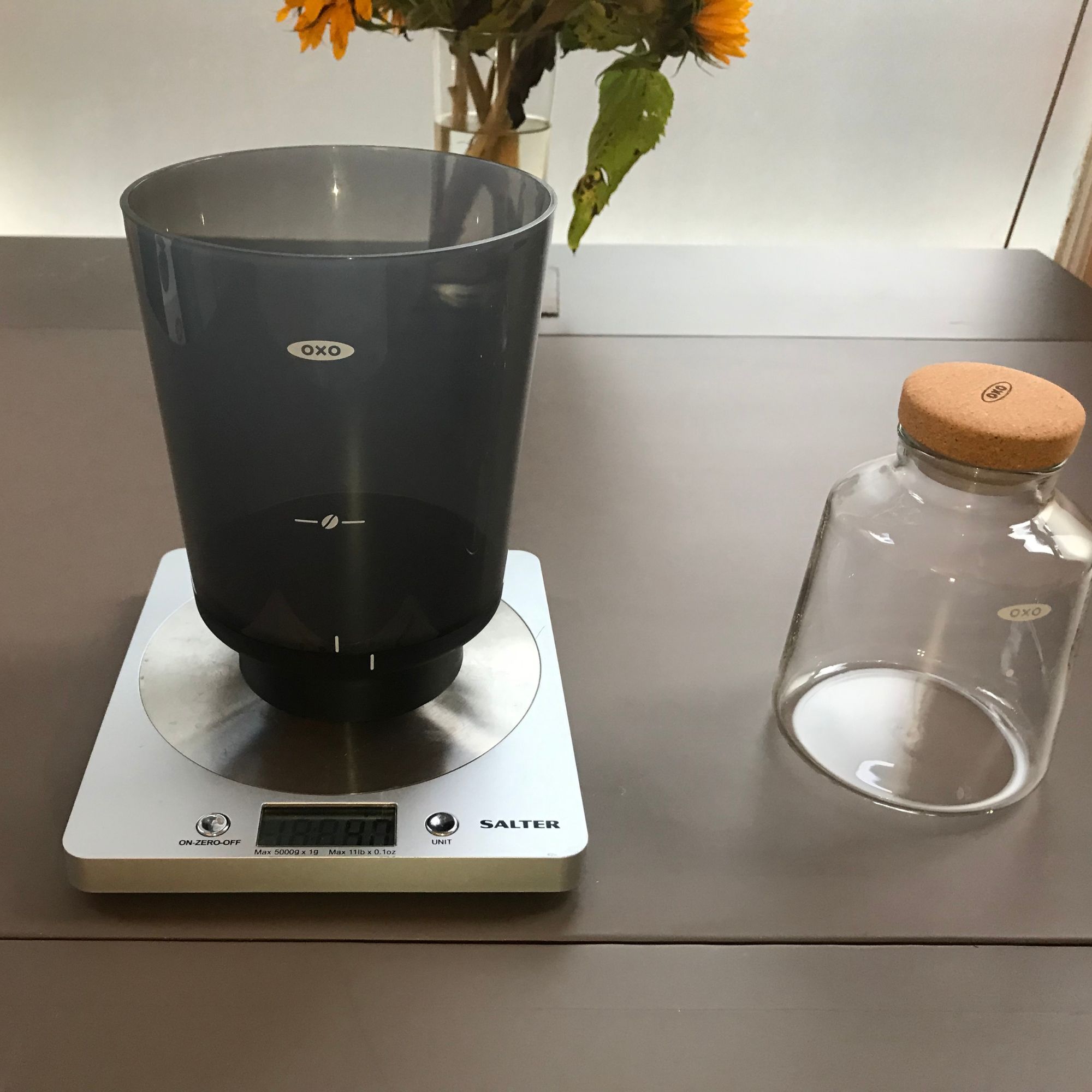
Aside from a precautionary rinse, the Brew Compact arrived ready to use. OXO couldn't have made things any easier. Just before brewing, I would recommend that you use a grinder, like the KitchenAid grinder, available at QVC, to grind your coffee beans. Fresh, coarsely ground beans are the best way to make the sweetest, smoothest brew. We explore the best coffee grinders in our dedicated feature.
Once you've ground your coffee, you can add it to the brew vessel, which has a bean icon on the side. If you fill up to this mark, you'll have 6 oz of coffee grounds. I filled up to the line, but sat the brew vessel on some coffee scales, like these coffee scales from Walmart. After all, brewing is a science as well as an art.
If you fill the glass decanter with water, you can use the line on the side to measure 12 fluid ounces of water. This makes the perfect 1:2 ratio for cold brew concentrate. Again, I measured my water out, so that I didn't over or under-saturate my grounds. If you use a filter jug, like the Brita water filter jug, which you can buy from Walmart, you'll have a much more consistent cold brew. The impurities in non-filtered water can create unusual, acidic, and bitter flavors in your brew.
Once I had measured my water, I poured it over the rainmaker in a circular motion. When I've used OXO's rainmaker on other products, water pooled in the middle. However, the Brew Compact didn't have this problem. Within a minute, all the coffee grounds were neatly and quickly saturated.
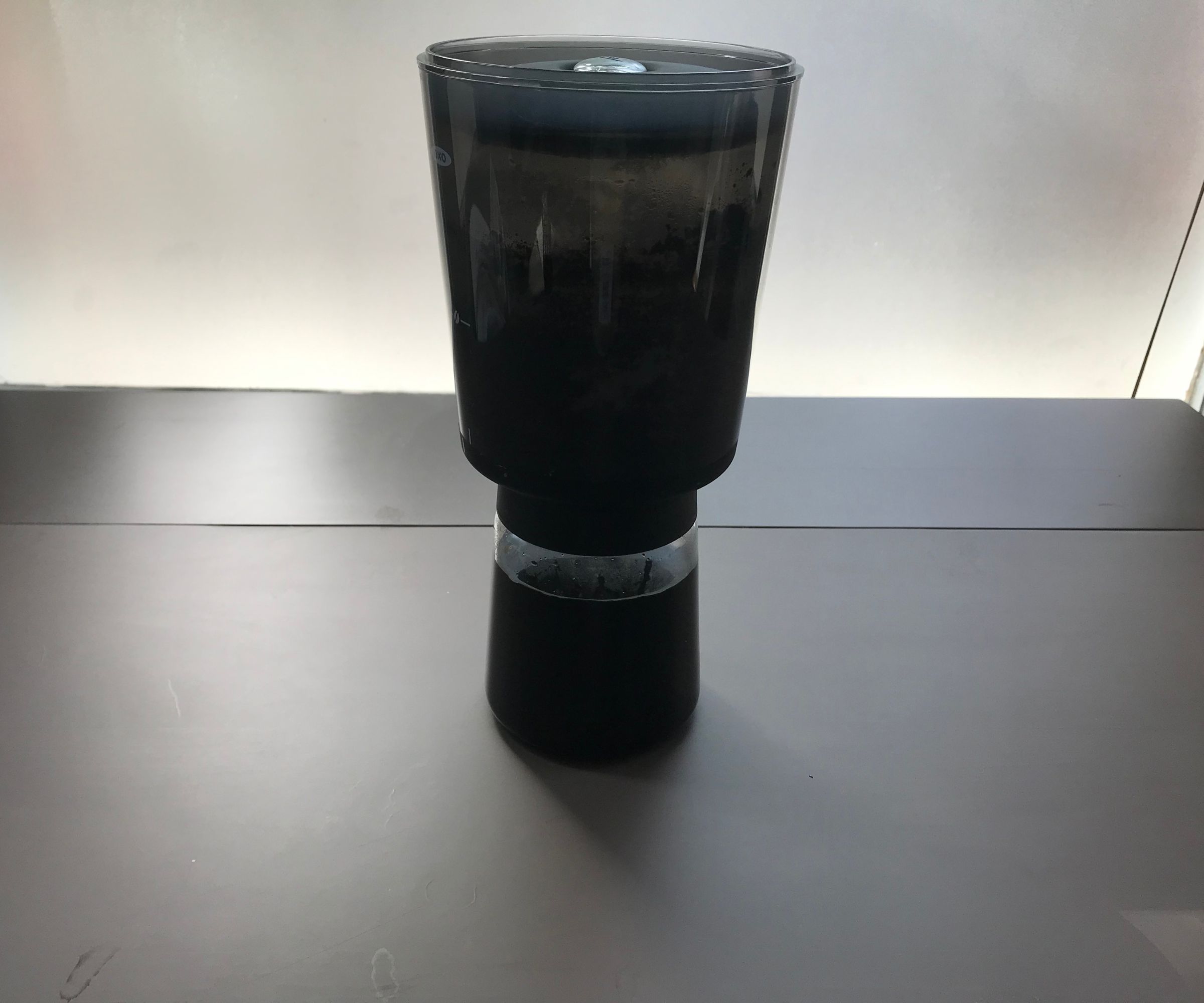
OXO recommends that you leave your brew vessel on the side, out of sunlight, for 12-24 hours. When I moved my vessel, I knocked the spring-loaded valve on the bottom and some cold brew dripped out. This isn't something you're likely to encounter often, because you shouldn't move your brewing container around when it's full. However, it's worth noting that the springs are sensitive.
I left my first batch for 18 hours before filtering my cold brew into the glass decanter. Simply sitting the brew vessel onto the glass decanter creates enough pressure to open the valve, letting your cold brew filter through. If you push down harder, the coffee won't filter out any quicker. Whilst it might look slow at first, the steady drips will make faster progress than you think. It takes about five minutes to filter the full 12 ounces of cold brew.
Even though this is a singular metal filter, it worked well and I only had some sediment in the bottom of my decanter. You could double filter and line your brewing container with a reusable filter bag like this one from Amazon if you want a cleaner, smoother cold brew.
I kept the glass carafe in my refrigerator for a week, diluting my coffee in a 1:2 ratio of cold brew and filtered water. I found that the Brew Compact enhances deep and earthy notes in coffee, rather than sweeter ones. I tried brewing for 12 hours and 24 hours, but that didn't change the sweetness. However, less brewing time did make my coffee taste more chocolatey.
Cleaning, Storage, and Maintenance
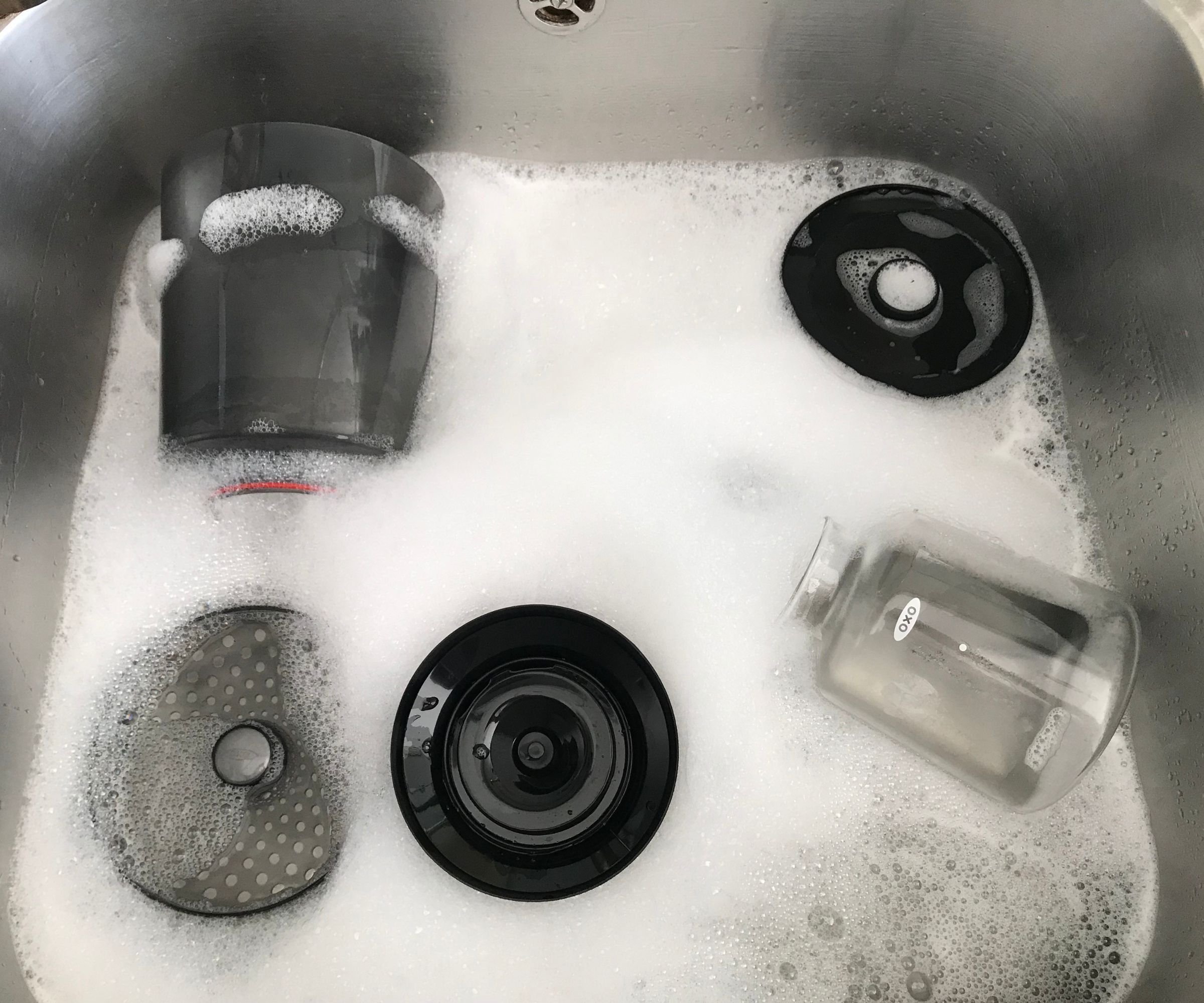
Thankfully, the brew container and glass decanter are wide and easy to clean. The parts, aside from the cork stopper and filter, are all dishwasher-safe. I wanted to give these a thorough clean, so I washed everything by hand, using warm water and some dish soap.
I recommend taking care when cleaning the filter. It's slim and could easily get lost in a mass of bubbles. The tight mesh structure easily harbors old coffee and stray grounds, so use a fine washing brush to ensure you don't leave any residue in the filter. I normally use a straw cleaning brush like this from Walmart, because they can reach all the tight spaces without much effort.
I can't overstate how easy this is to store. It's small and compact, so you can put it in your cabinets or leave it on your countertop. Even when you're mid-brew, the minimalist aesthetic of the Brew Compact is pleasant, something which doesn't apply to every machine.
How does it rate online?
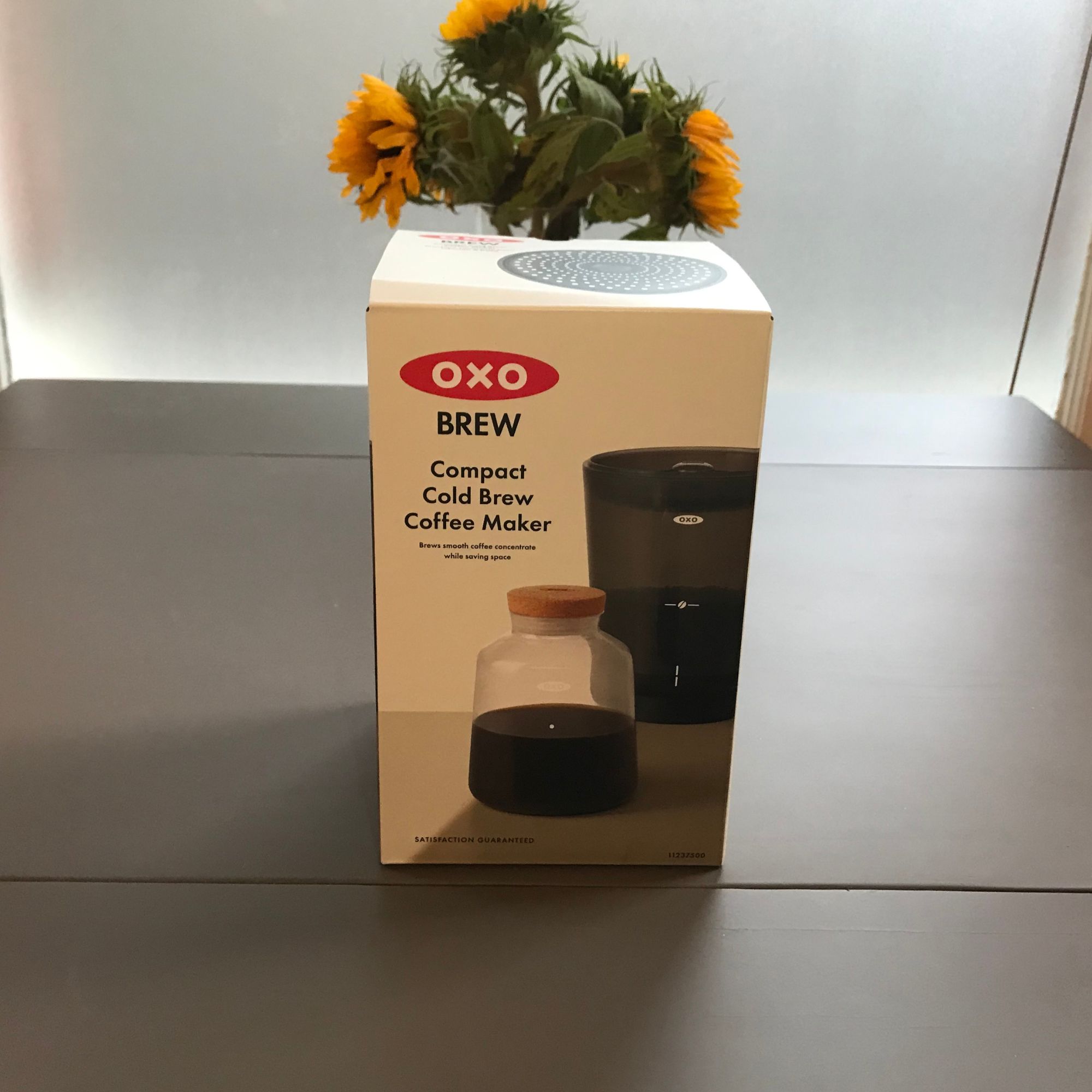
Unsurprisingly, reviewers and customers alike love the Brew Compact. They praise its bold, full-bodied flavors, as well as celebrating how easy it is to use.
I was surprised that people didn't think it was too expensive. It has a 16 oz capacity, which is less than half of the Toddy Cold Brew (you can click through for our review), but it's still roughly the same price. Even though this seems expensive, I found a number of reviewers going over the numbers. They pay $5 at their local coffee shops for a cold brew, so at $30, this has more than paid for itself within a week.
I couldn't find many complaints about the Brew Compact. Some people found the cork stopper to be a little loose, so questioned how airtight it would be. However, the proof is in the brewing. It kept my coffee fresh week after week.
How does it compare?
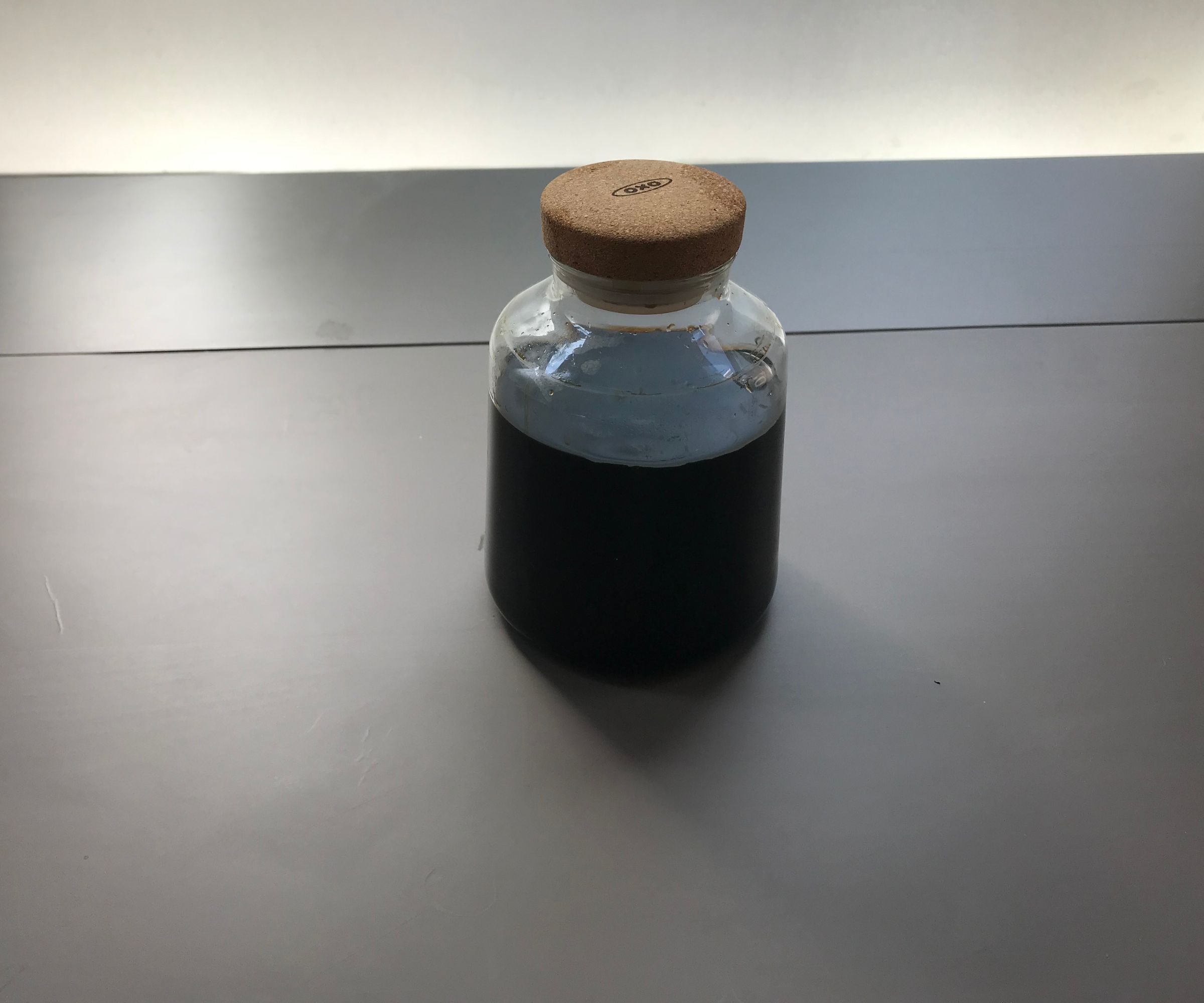
As a small cold brewer, the most natural competitor for OXO is the Bodum Bean Cold Brew Set. This uses a French press style of infusion to make cold brew. Both the Bodum and OXO are easy to store and they look attractive too. However, the small Bodum looks huge in comparison to the OXO. If you're looking for a compact cold-brew coffee maker, the OXO is a better fit.
The Bodum isn't as thorough at filtering your cold brew as the OXO. Lots of customers reported slightly grainy cold brews, especially when they plunged the plunger too quickly. Bodum also doesn't provide a carafe to store your coffee concentrate in, so you'll need an airtight bottle to keep it fresh.
Should you buy it?
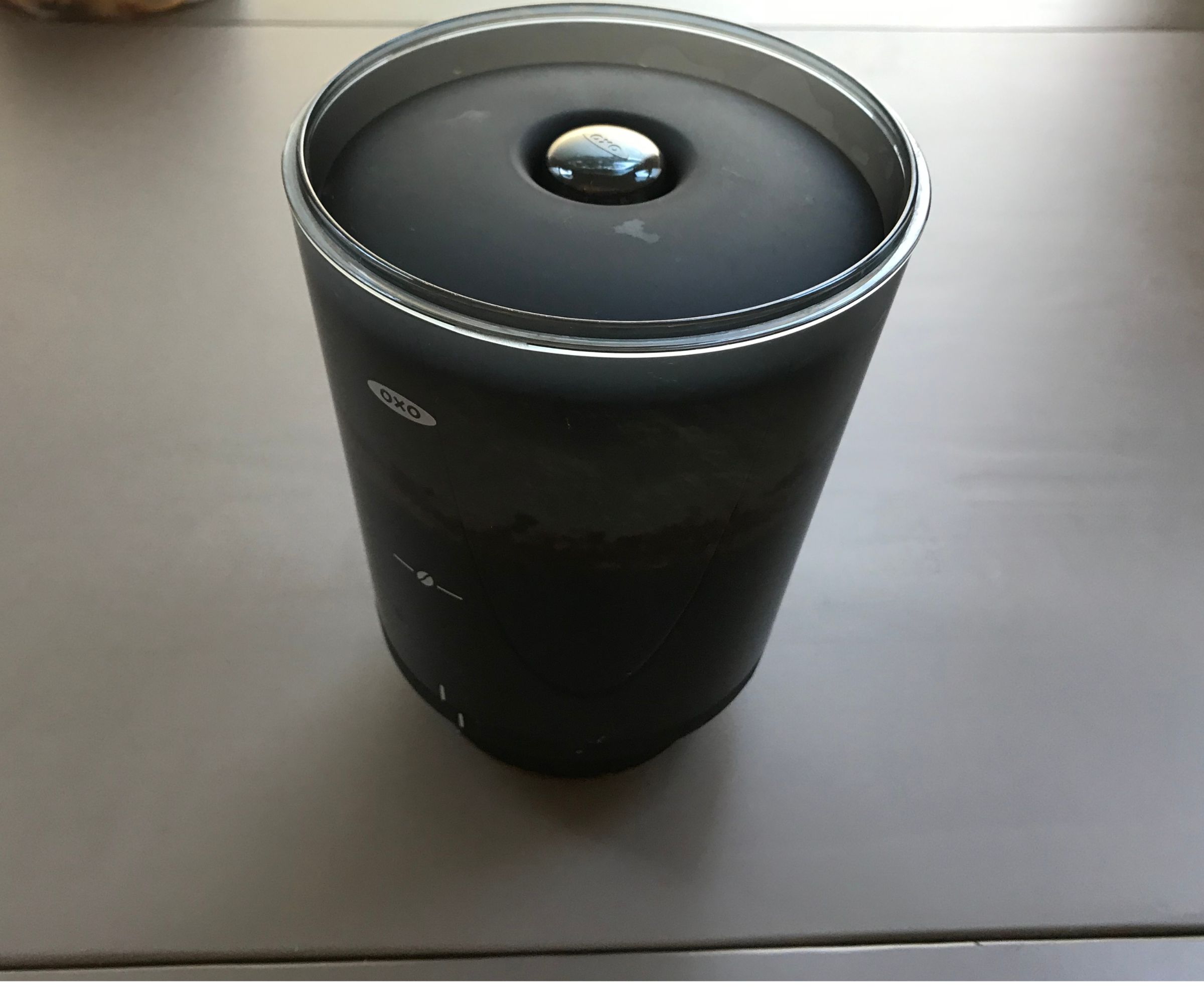
Over the last year, I've only fallen more in love with the OXO Brew Compact. If you have a small kitchen and you need to make cold brew for one, the Brew Compact is a must-have. It looks beautiful and it can make a good cold brew concentrate. I haven't had to sacrifice much countertop space for my coffee and I don't wince when I look at it. In fact, it looks sleek and stylish. If you can't tell, I'm sold on this excellent cold brew coffee maker.
How We Test
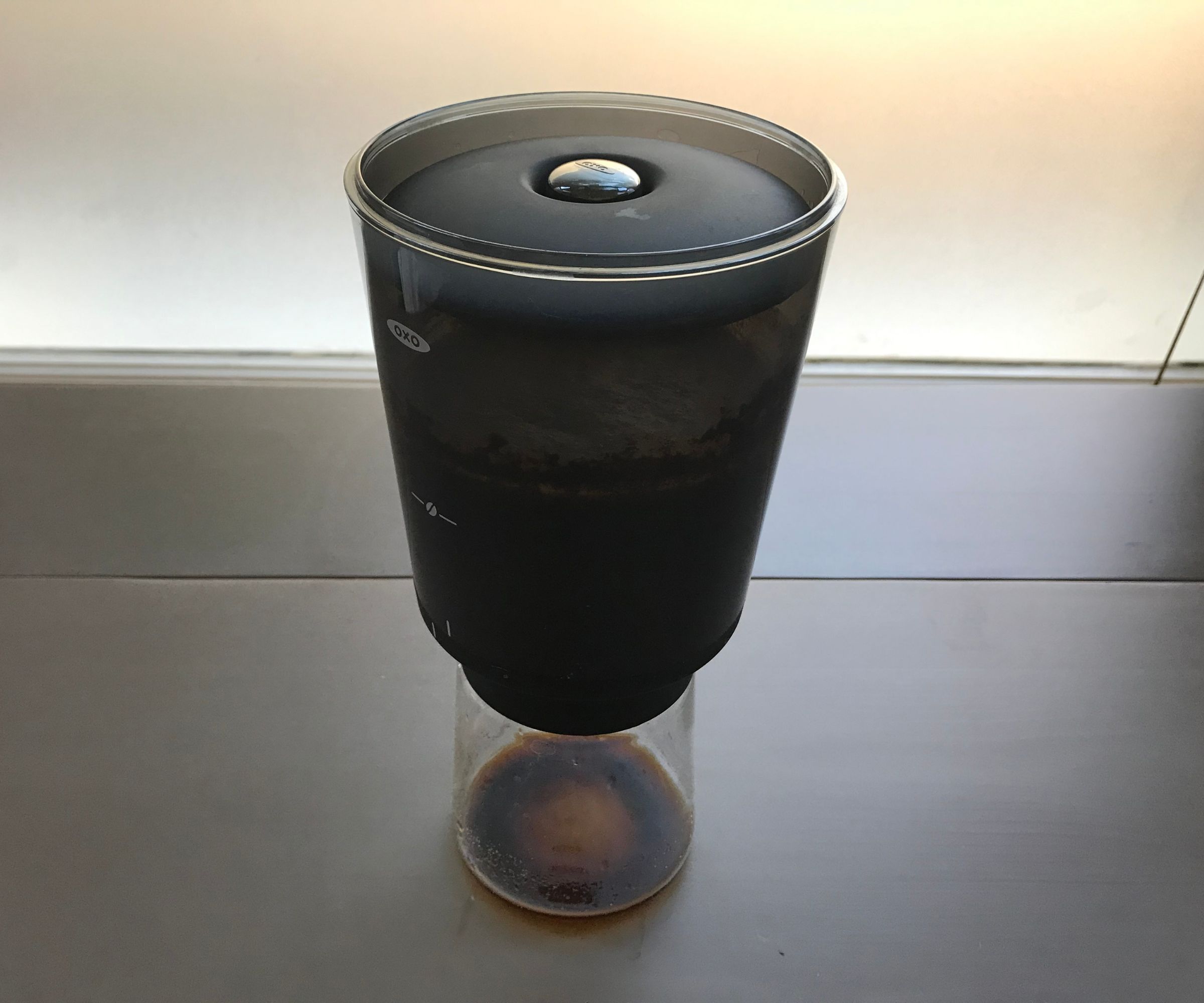
We test all our cold brew coffee makers before we recommend them to you. They'll either go to our test kitchen, our experts' homes, or both. We aim to replicate a domestic environment, so that we can feedback on how these perform in everyday use.
I used the OXO Brew Compact in my home for the last four weeks. This meant that I noticed the day-to-day quirks, such as the sensitive springs. We put taste at the top of our list, but we'll also think about all the external factors and processes that involve cold brew. From unboxing to cleaning up, we make notes on each part of the process, so that you don't have any surprises when yours arrives at home. If you'd like to find out more about how we test coffee makers, you can read our dedicated page.
Sign up to the Homes & Gardens newsletter
Design expertise in your inbox – from inspiring decorating ideas and beautiful celebrity homes to practical gardening advice and shopping round-ups.

Laura is our eCommerce editor. As a fully qualified barista, she's our expert in all things coffee and has tested over thirty of the best coffee makers on the market. She has also interviewed Q-Graders and world-leading experts in the coffee industry, so has an intimate knowledge of all things coffee. Before joining Homes & Gardens, she studied English at Oxford University. Whilst studying, she trained as a master perfumer and worked in the luxury fragrance industry for five years. Her collection of home fragrance is extensive and she's met and interviewed five of the world's finest perfumers (also known as 'noses'). As a result of this expansive fragrance knowledge, she always puts quality and style over quantity and fads. Laura looks for products which have been designed simply and with thoughtful finishes.
-
 Jennifer Aniston’s bedroom is a ‘goldmine of simple sumptuousness’ – it’s 2025’s version of quiet luxury and so easy to recreate
Jennifer Aniston’s bedroom is a ‘goldmine of simple sumptuousness’ – it’s 2025’s version of quiet luxury and so easy to recreateThe actress's unique space features James Mont-designed lamps and a raised bed inside a walnut plinth – but you can recreate its understated sophistication
By Megan Slack Published
-
 Zooey Deschanel and Jonathan Scott's breakfast nook is an innovative, effective use of kitchen space – it turns a 'dead area' into a cafe-style corner
Zooey Deschanel and Jonathan Scott's breakfast nook is an innovative, effective use of kitchen space – it turns a 'dead area' into a cafe-style cornerJonathan and Zooey have situated an eccentric yet elegant dining area in what may have been an otherwise underused corner
By Hannah Ziegler Published
-
 Kelly Ripa and Mark Consuelos's dining room shelves combine unexpected elements for the ultimate storage solution – it's multi-functional and replicable
Kelly Ripa and Mark Consuelos's dining room shelves combine unexpected elements for the ultimate storage solution – it's multi-functional and replicableGreen shelves in Kelly Ripa and Mark Consuelos' dining room cleverly combine storage to accomplish separate purposes in a pretty way
By Sophie Edwards Published